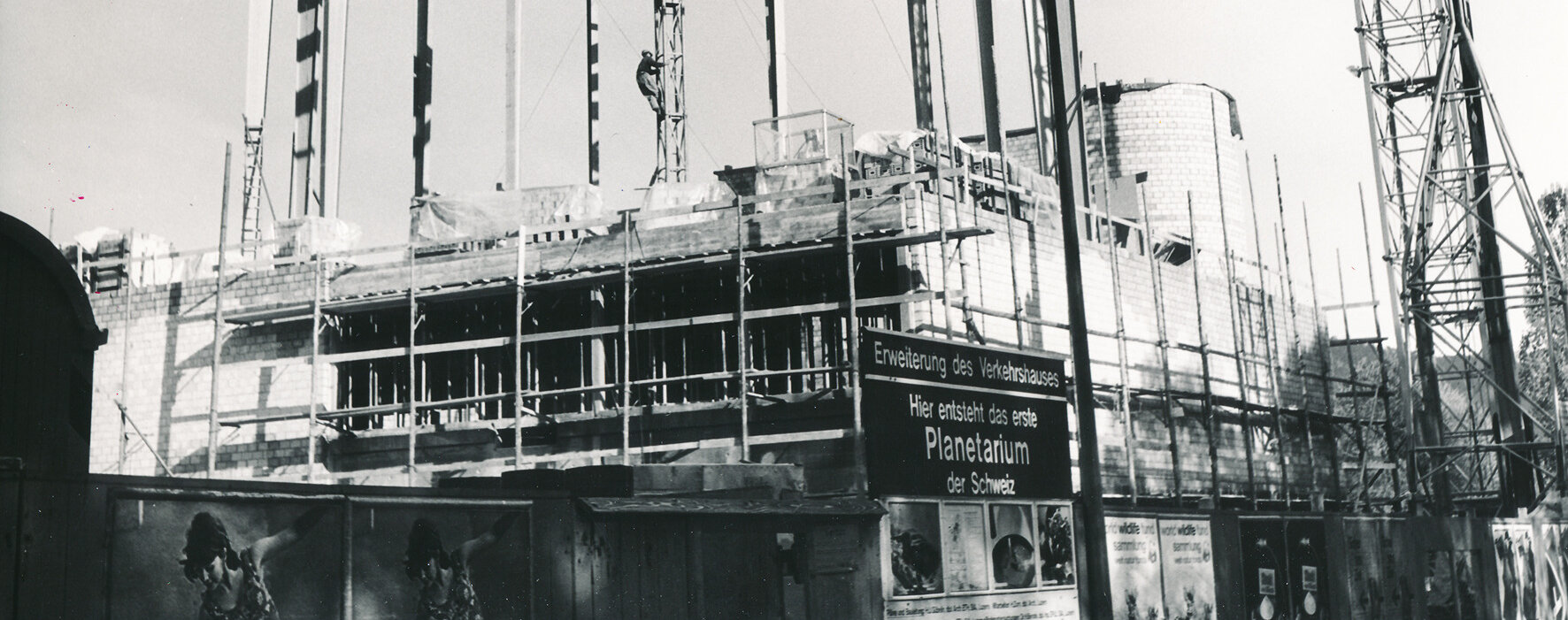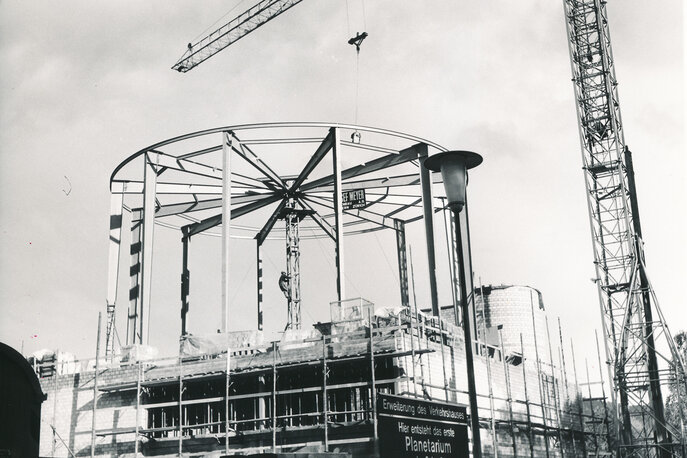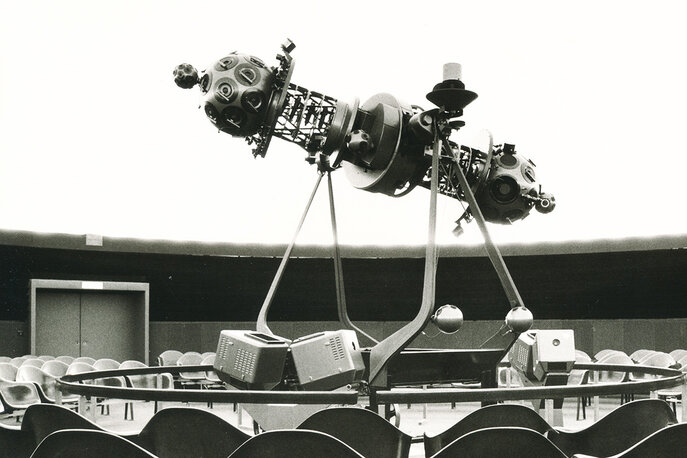
Just a few days before man first set foot on the moon, Switzerland's first planetarium went into operation at the Swiss Museum of Transport on July 1, 1969.
A story from the Swiss Museum of Transport Magazine April 2019
Thousands of admissions in the first few years
"Surprising", "fascinating", "very educational"
- it is not uncommon to hear such reactions when visitors rise from the comfortable planetarium chairs at the end of a show and the dome gently lights up again. It quickly becomes clear that the planetarium is undoubtedly one of the outstanding attractions at the Swiss Museum of Transport.
In the 50 years since the opening of Switzerland's first and largest planetarium, 8.3 million admissions and thousands of school classes have already been counted in the circular hall.

Distinguished visitors at the opening
On July 1, 1969, the first curious guests were welcomed to what was then the Longines Planetarium, named after its generous main sponsor. Together with Swiss Museum of Transport founder Alfred Waldis, US astronaut John Glenn opened the planetarium with a live commentary via the "Early Bird" news satellite from New York. Glenn was the first American to orbit the earth in a spaceship and was therefore the perfect ambassador for the first Swiss planetarium, but also for an upcoming world event: the landing of the first man on the moon. Just twenty days after the planetarium opened, Neil Armstrong set foot on the surface of the Earth's satellite. The huge enthusiasm surrounding the space race between the Soviet Union and the United States helped the planetarium to a long-lasting surge in popularity. The star projections became an attraction for young and old alike. Thanks to Alfred Waldis' good contacts in the space scene, many other astronauts and cosmonauts later visited the planetarium. These included the Americans Neil Armstrong and Charlie Dukeder Russian Vitali Sevastianov, the Swiss Claude Nicollier and Wernher von Braun, the planning director of NASA.
Precision mechanical projection
Not only its high-caliber visitors, but also the technical equipment quickly made the planetarium a unique place that must be visited at least once in a Swiss person's life. Thanks to the huge projection surface of 510 square meters and a 2.5-ton star projector from Carl Zeiss, thousands of stars could already be projected onto the artificial sky at the end of the 1960s. The mighty projector in the middle of the room was used to display almost 9000 fixed stars and with the help of dozens of additional projectors and slide projectors, round panoramas, solar and lunar eclipses, shooting stars and comets could also be displayed. The movements were controlled manually via a control panel with 170 buttons.

Milestones in the history of the planetarium
July 1, 1969
Opening with classic Zeiss planetarium projector
made possible by the sponsor Longines
From 1993
Installation of around 70 slide projectors
for displaying panoramas and dome-filling still images (so-called Allskys)
1.July 2001
Replacement of around 120 special and slide projectors
by adding a full-dome SkyVision video system from Sky-Skan (playback video) to the ZEISS planetarium projector
Installation of a new dome (AstroTec) and a new sound system
as well as safety-related modifications to the building and a new façade with thermal insulation
29. September 2013
Last light of the Zeiss Planetarium projector from 1969 and the full-dome video system from 2001
From October 2013
Conversion of the planetarium to a real-time digital projection system (Digistar 5 from Evans & Sutherland)
Dome re-sprayed, installation of a lounge
1.December 2013
Resumption of operations
Parallel preparation of a new, live commented, interactive program format
January 2017
Upgrade from Digistar 5 to Digistar 6 and renewal of the computers
July 2019
Celebrations and special program for the 50th anniversary